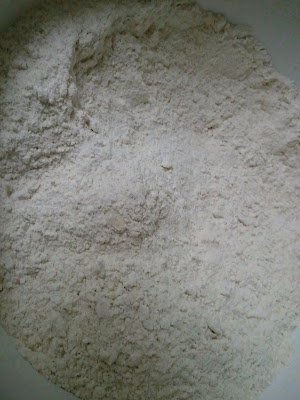Let me tell you another story about Cracker Barrel, and at the same time, a story about hockey pucks.
I've mentioned before that Cracker Barrel was one of our family's favorite restaurants--if we were going out to eat, it was good, home-style cooking that provided something everyone liked. I also already said I could have been content with their biscuits and blackberry jam.
I know I asked my mom at least once or twice if she'd ever made homemade biscuits, because our usual home-baked version came from a can that usually read, "flaky, layered" or "buttermilk" or "fluffy." I loved peeling apart the layered ones and putting jam on all the layers...
Well, it turns out that biscuit ruining is a family trait. I'm pretty sure that Mom didn't make the attempt very often because both her mother and mother-in-law had issues with biscuit pucks. Since my brother played hockey, it might have been okay to sacrifice a batch or two to the cause, but (as Mom pointed out) we all really liked the canned biscuits, and they were easy to pop in the oven while Mom worked hard on a different part of the meal. So why ruin a good thing?
Enter my college years. Mom had taught me all the basics of cooking and baking. I started out eating in the dorm cafeteria and promptly gained the freshman 15 (just ask my old roommate--she's another voice on this blog). I also really liked boys and wanted a way to entice them to stick around for awhile. So I started cooking Sunday dinners and inviting said boys. Since I had lots of time on Sunday afternoons, (and no trips to the store for canned biscuits) I opted to make everything from scratch.
The first homemade biscuits I ever made, I sought out those perfect layered biscuits. They started with a basic dough, made with butter, that I rolled out, spread butter over the layer, folded, and gently rolled again. Delightful.
Now, cooking for my family, I don't usually go to that much effort. I have an easy biscuit recipe I use, which is pretty fool-proof, provided you follow proper biscuit "etiquette."
Mix your dry ingredients first.

Then cut in the shortening. If you don't have a pastry blender, use to knives crossing each other or a fork.

Add the milk and gently mix it in. Give it a few turns with a wooden spoon and then leave it alone. Some spots will be more dry; some more wet. That's okay. Leave it.

You could roll it out and go to all that trouble, (they'll look nicer) or you could be like me and drop big spoonfuls on a greased baking sheet and press them flat.

Bake them at 400 for 10-12 minutes, or until those little peaks start to brown.
Homemade Biscuits
3 cups flour (can use whole wheat, but not bread)
1 T baking powder
1/2 tsp salt
1/2 cup shortening
1 cup (or a touch more) milk
Combine dry ingredients in medium sized bowl. Cut in shortening. Gently stir in milk. Roll out or drop by 1/4 cupfuls (pressed flat) onto greased baking sheet and bake at 400 degrees for 10-12 minutes, or until lightly browned.



























